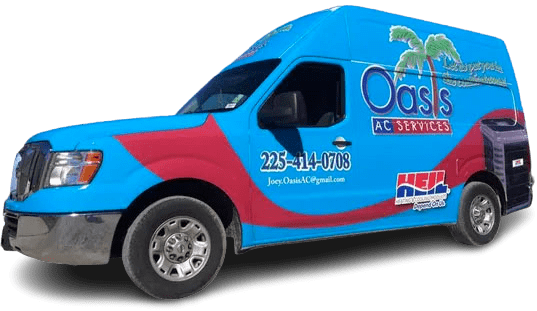The Inflation Reduction Act (IRA) aims to reduce inflation, curb carbon emissions, and offer tax incentives. This landmark legislation provides rebates and tax credits for installing ENERGY STAR®-certified home heating and cooling systems. Below, we address some of the most common questions about the IRA.
Understanding the Inflation Reduction Act (IRA)
The Inflation Reduction Act includes rebates and tax credits to support energy efficiency. Homeowners can claim benefits for ENERGY STAR® products under specific programs designed to make homes greener and more cost-efficient. These initiatives contribute to a more sustainable future by incentivizing eco-friendly upgrades.
Key IRA Incentives
The IRA offers two types of benefits:
- Rebates:
- Administered at the state level.
- Designed for low-to-moderate-income households.
- Provide immediate, point-of-sale benefits.
- Tax Credits:
- Available to anyone with taxable income.
- Can be combined with other credits.
- Applicable for the next tax filing year.
IRA Tax Credits Overview
The IRA offers four major tax credits for energy-efficient upgrades:
- Tax Section 25C: Nonbusiness Energy Property Credit
Homeowners can claim up to 30% of installation costs for high-efficiency products. This credit caps at $600 for air conditioners and furnaces and $2,000 for heat pumps. - Tax Section 25D: Residential Energy Efficient Property Credit
Provides a 30% tax credit for ENERGY STAR® geothermal heat pumps until 2032. The percentage decreases to 26% in 2033 and 22% in 2034. - Tax Section 45L: New Energy Efficient Home Credit
Builders receive $2,500 for ENERGY STAR 3.1 certified single-family homes and $500 for multi-family units. Meeting Zero Energy Ready standards increases the credit to $5,000 and $1,000, respectively. Additional credits apply if prevailing wage requirements are met. - Tax Section 179D: Commercial Buildings Energy-Efficiency Deduction
Building owners can deduct up to $14,000 for qualifying energy-efficient installations.
Subheading: IRA Rebates and Their Benefits
The Inflation Reduction Act rebates target specific upgrades and income groups:
- High-Efficiency Electric Home Rebate Program
- Up to $8,000 for all-electric heat pumps.
- $4,000 for electrical load service upgrades.
- $2,500 for electric wiring improvements.
- HOMES Rebate Program
- Rewards energy-efficiency upgrades in single-family and multi-family homes. These rebates are performance-based, providing higher incentives for greater energy savings.

Leveraging IRA Opportunities
Dealers should actively promote the IRA’s benefits. Research available tax credits and qualifying products, then communicate this information during sales presentations. Additionally, reach out to customers who made qualifying upgrades in previous years to inform them about potential credits.
Limitations and Clarifications
- The IRA does not retroactively apply to installations completed before 2022.
- Rebates and tax credits cannot be combined for the same upgrade.
Understanding CEE Standards and Tiers
The Consortium for Energy Efficiency (CEE) sets specifications for energy-efficient products. These standards guide eligibility for tax credits under Section 25C. To qualify, products must meet the highest tier below the “Advanced Tier.”
Differences Between CEE and NEEP
CEE differs from the Northeast Energy Efficiency Partnerships (NEEP). While both promote energy efficiency, CEE focuses on harmonizing standards across North America. Only M1-rated equipment qualifies for IRA benefits.
Determining Low-to-Moderate Income (LMI)
Low-to-Moderate Income (LMI) eligibility is based on Area Median Income (AMI). This determination varies by state, city, and county. Contact your local municipal office for specific guidelines. Income-based rebates prioritize making energy-efficient upgrades accessible to everyone.
Subheading: Maximizing Tax Credits Under the IRA
The Inflation Reduction Act offers significant tax savings. However, understanding the following details is essential:
- Annual Cap vs. Lifetime Cap
- No lifetime cap exists for Section 25C credits.
- The annual cap is $1,200 for qualifying products and $2,000 for heat pumps. Combined, homeowners may claim up to $3,200 yearly.
- Eligibility Requirements
- Tax credits apply only to system combinations that meet specified efficiency levels. If uncertain, consult a tax professional for detailed guidance.
State Rebate Administration
State governments administer IRA-funded rebates. Each state will determine processes for verifying income eligibility and disbursing funds. Dealers should monitor updates from their state to stay informed.
Subheading: Frequently Asked Questions About IRA Timing
- Retroactive Application Tax credits apply to installations meeting the criteria in effect during the installation year. For example, 2023 installations must adhere to 2023 guidelines.
- Multiple Systems in a Home Homeowners can claim separate credits for multiple systems, subject to annual caps. To maximize savings, stagger installations over multiple years.
Dealer Best Practices
To capitalize on the Inflation Reduction Act benefits, dealers should:
- Educate Customers: Provide clear explanations of available rebates and tax credits.
- Focus on Efficiency: Promote products meeting the highest efficiency standards.
- Stay Updated: Regularly check for changes in eligibility criteria and documentation requirements.
By emphasizing the IRA’s benefits in every sales pitch, we help customers make informed decisions while contributing to a greener future.
Additional Details About IRA Programs
The Inflation Reduction Act continues to generate interest due to its diverse benefits for homeowners and businesses alike. These incentives aim to create long-term energy savings while helping reduce greenhouse gas emissions. Below, we explore further aspects of the IRA:
The Role of ENERGY STAR®
ENERGY STAR® certified products are a cornerstone of the IRA’s incentives. These products meet strict energy-efficiency guidelines set by the U.S. Environmental Protection Agency. By choosing ENERGY STAR®, homeowners not only save money but also contribute to reducing carbon emissions.
Supporting Low-Income Households
The High-Efficiency Electric Home Rebate Program specifically targets low-to-moderate-income households, ensuring that energy-efficient solutions are accessible to everyone. These rebates can cover a significant portion of installation costs, making upgrades more affordable.
Subheading: How the IRA Impacts Builders and Contractors
Builders and contractors also stand to benefit from the IRA. Tax credits under Section 45L and deductions under Section 179D incentivize energy-efficient construction and retrofitting. These benefits encourage the adoption of advanced technologies and practices in the building industry.
Ensuring Compliance
Builders must ensure that their projects meet the latest energy standards to qualify for tax credits. This involves using certified products and adhering to installation best practices. By doing so, builders not only meet compliance but also offer added value to their clients.
Looking Ahead
The Inflation Reduction Act represents a significant step toward a more sustainable future. By taking advantage of its rebates and tax credits, we can reduce our environmental impact while enjoying substantial cost savings. Whether you are a homeowner, builder, or contractor, the IRA provides opportunities to make energy-efficient choices that benefit both us and the planet.


